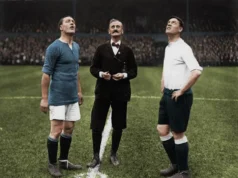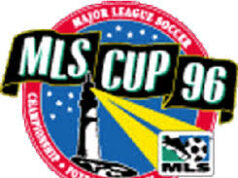The time for this article probably passed a long time ago, but with the next U.S. match not for a little bit, we’ve got time to reflect on things like this. Bob Bradley’s tenure as a coach was nothing short of controversial, with hatred pooring out of his mailbox as soon as he was given the job. Indeed, as I’ve stated before, Juergen Klinsmann seems to be taking a path that is quite the antithesis to the former MLS Coach’s legacy. Klinsmann’s U.S. sides have, save for the Mexico match, started out fairly well, and finished off somewhat disappointingly, except for the Honduras match, which is currently the U.S.’s only win during the Klinsmann era.
That comes down to the each coach’s approach to tactics. In particular, their individual methods of defending epitomizes their philosophy and style behind the game. In his first press conference, Juergen Klinsmann talked about the USA taking a more proactive approach to the game. That was on full show in the game against Costa Rica, where the USA came out pressing their opponent on defense and giving them little time on the ball for the first 40 minutes of the game. However, the USA soon tired, and saw their grip on the game loosen in the second half. This is at the center of the USA’s recent habit of starting out matches well and finishing poorly.
It’s not so hard, then, to figure out what might have contributed to the USA’s penchant for going down early under Bob Bradley. Bob was a bit less aggressive in the way he played, preferring to allow the opponent time and space to get their grip on the game. My main thought behind that reasoning is that it seems Bob likes to take his time to analyze the opponent’s tactics and then make in-game changes accordingly. The problem with that approach is that even if his changes were correct, by the time he made them, the team might be in a hole too big to get back from. This was the problem against Panama in the group stage of the 2011 Gold Cup, where the USA clearly did better after certain changes from Bob Bradley, but poor finishing let them down. Essentially, Bob’s pre-game tactics were suited to his team, and his in-game changes were suited to his opponents’ tactics.
This approach to tactics was why it took as long to fire Bob Bradley as it did. Sunil Gulati had to ask himself a question: Could he keep taking the risk that Bob’s in-game tactics might not overcome any hole that his pre-game tactics put them in? The USA’s elimination from the World Cup against Ghana was also due to Bob Bradley getting his pre-game tactics wrong and his in-game tactics not being able to account for it. Even in the Slovenia game, the USA started out poorly, although, that was down to the Slovenian side switching their own tactics around rather than Bob Bradley simply getting his wrong. Even so, the USA nearly didn’t come out of that hole, although, to be fair, the USA “should” have ended up taking all three points.
That being said, I have great respect for Bob Bradley as a coach. He clearly had a good understanding of tactics, and constructed very interesting systems, even if they didn’t always work. His use of Landon Donovan as a false nine( a lone striker dropping into the midfield to drag defenders out of position/receive the ball in space) in the Gold Cup final against Mexico was quite creative, and led straight to the marvellous second goal, with Donovan dropping into he midfield to pick up the ball unmarked, and continuing his run into the heart of the Mexican defense onto a Clint Dempsey pass. The problem was he didn’t start adjusting his sides tactics to suit his opponent until it may have been too late. What puzzles me is that he clearly has the tactical acuity to re-shape his side accordingly before the game, but he didn’t.
Either way, there are flaws to both coaches approaches, the question is which one suits the USA more. The first five matches of a coaching regime is a bit to early to say, but Juergen Klinsmann seems to be making connections with the USA more and more every day, and it may not be long before the team starts to put it together.





